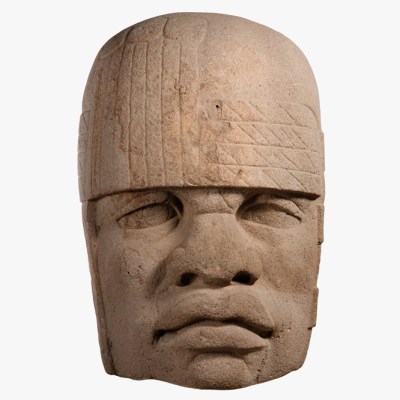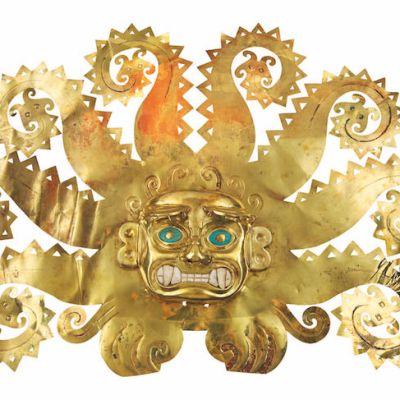On 9 February Christie’s conducted an auction in Paris of pre-Hispanic artefacts, ‘Quetzalcoatl: Serpent á Plumes’, that included approximately 33 objects from Mexico. The auction was a success, with Christie’s announcing that the total sale reached €2,559,125, but it was conducted in the face of a formal protest lodged by Mexico’s National Institute of Anthropology and History (INAH). INAH objected to the sale on several grounds, asserting that many of the artefacts are patrimonial objects that belong to Mexico, smuggled from the country illegally after being looted from unknown sites, and that others were likely forgeries.
This protest is only the latest instance in which the Mexican government has attempted to intervene in the circulation of Mesoamerican artefacts. In recent years, there have been a number of similar cases; in September 2019, for example, Mexico objected to the auction of 120 artefacts sold by the Parisian auction house Millon. But the struggle over the archaeological riches of Mexico is as old as the nation itself. For many postcolonial nation-states, challenging European authority over their archaeological legacy – over the right to lay claim to their own past – has been a crucial part of the nationalist project.
Importantly, there are a number of different contexts in which archaeological artefacts such as those auctioned in Paris have been discussed. Such items were initially the province of antiquarians and collectors. With the professionalisation of archaeology, they became the object of scientific study, and with the rise of the nation-state, they became nationalist symbols. In Mexico, at the end of the 19th century, artefacts such as the Aztec sun stone (now a centrepiece of the Museo Nacional de Antropología in Mexico City) and archaeological sites such as Teotihuacán became inextricably linked with the creation of a specifically Mexican national identity and served to ground the nation’s authority in tradition and antiquity.
The Aztec sun stone at the Museo Nacional de Antropología in Mexico City, photographed in c. 1930. Photo: Ewing Galloway/General Photographic Agency/Getty Images

For postcolonial nations with particularly rich archaeological resources, such as Egypt or Mexico, maintaining control over and safeguarding that heritage has been a priority. Indeed, Mexico was among the first to establish national authority over archaeological finds, beginning in the 1880s with legislation against the looting of archaeological sites and the selling of artefacts. In 1897, Mexico passed laws stating that any artefacts found within Mexico belonged to the state and the national museum. Artefacts could not leave the nation without an official permit from the government. These laws remain in force, and in 1970 they were supplemented by a UNESCO mandate prohibiting the trafficking of artefacts.
In responding to INAH’s calls to halt the sale this February, Christie’s expressed confidence that the items’ provenance was legitimate. The Mexican historian and archaeologist Daniel Salinas Córdova notes that ‘Although there is often a small history of the previous owners and collections to which the pieces “belonged”, it is not clear when and under what circumstances the pieces left their places of origin.’ In a statement issued after the sale, the auction house reiterated that ‘under no circumstance would Christie’s knowingly offer a work of art where there are valid concerns over authenticity or where we know the object to have been looted or illicitly obtained’.
The head of INAH, Diego Prieto, has maintained that it is a crime for these artefacts to even be in Paris, ‘given that the Mexican legislation established that the artefacts are assets of Mexico [and they] are the inalienable and imprescriptible property of the nation’. In Mexico, as Prieto points out, it would be illegal to sell such patrimonial objects. Supporting this objection, Daniel Salinas Córdova has argued that auctions of such artefacts are dangerous because they ‘promote the commercialization and privatization of cultural heritage, prevent the study, enjoyment, and dissemination of the artifacts, and promote archaeological looting’.
Prieto has also raised the possibility that several of the objects in the auction were forgeries. INAH has suggested that at least one of the artefacts, a greenstone mask listed by Christie’s as a 1,400-year-old artefact from Teotihuacán, may be from the 20th century. In its provenance listing, Christie’s states that William Spratling, an American silversmith and art dealer, sold the mask to the French art dealer Pierre Matisse – son of Henri Matisse – in 1938. If Spratling thought it was an antiquity, he needed a permit from the Mexican government to sell the object.
The issue of fabricated Mesoamerican artefacts is a long-standing one. Since the late 19th century, anthropologists have been warning that Europeans and Americans had been buying falsified antiquities from vendors at archaeological sites in Mexico. Indeed, many Mesoamerican forgeries are so well made that they may never be identified as fakes. For example, it is known that looters in the late 1800s were able to find historic moulds that had been used at Teotihuacán and other sites and use them to replicate ancient objects. Eugène Boban, the French antiquarian and official archaeologist at the court of Maximilian I, famously sold crystal skulls that were later revealed as forgeries. A more recent example is provided by the archaeologist Justin Jennings, who proved that a Zapotec urn, held at the Royal Ontario Museum, long believed to be an antiquity, was actually crafted around 1900.
The greenstone mask sold for €437,500. Some have argued that auctions such as this one, which monetise contested artefacts, can drive more illicit trade, including the raiding of unexcavated archaeological sites worldwide (and motivate forgers to create more objects). Labelling objects as national patrimony and removing them from the marketplace can work to undercut this incentive. The international community, led by countries with strong archaeological legacies such as Mexico and Egypt, has continued to develop and enforce laws against looting and trafficking in archaeological artefacts. Organisations such as INAH have continued to raise objections to their sale. Given the financial success of Christie’s auction, however, it is clear that the conflict over this irreplaceable legacy remains unresolved.
Seonaid Valiant is curator for Latin American Studies at the Arizona State University Library.



